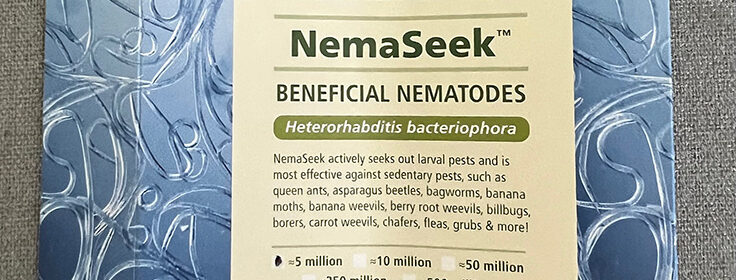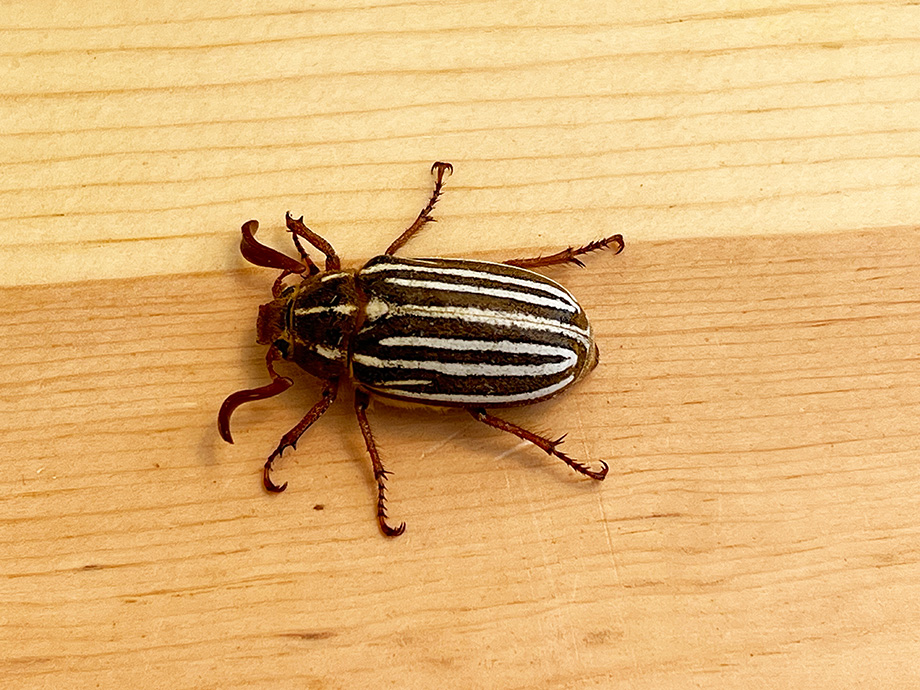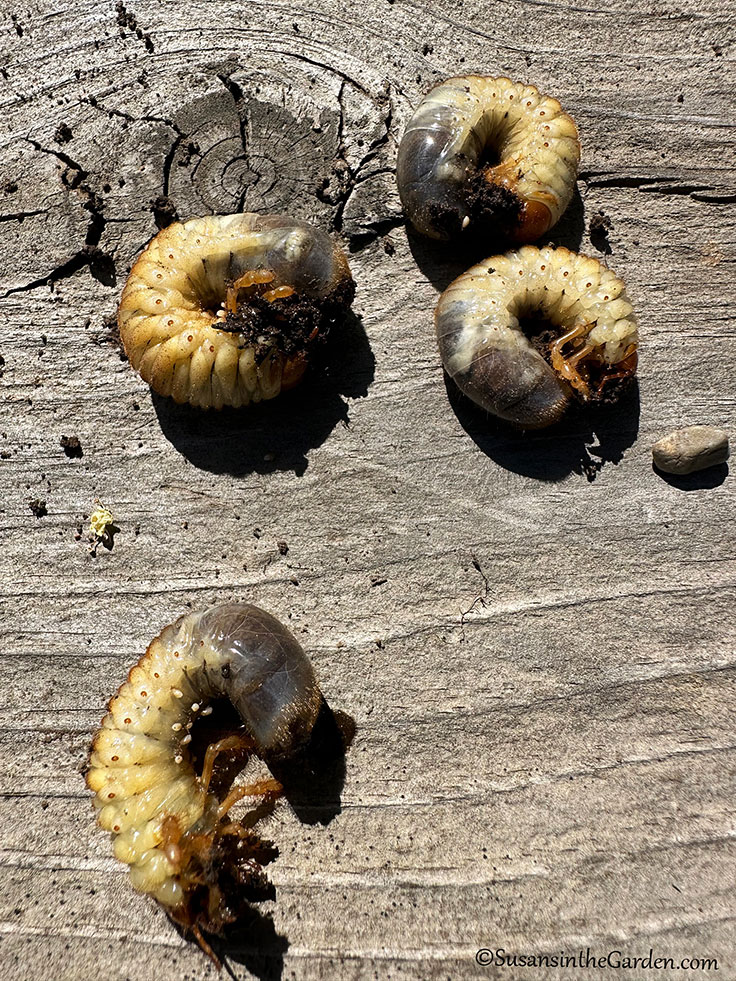Column: Beneficial Nematodes

For today’s garden column, I chose a topic that I’ve never written about before: beneficial nematodes. If you’ve never heard of them, they are microscopic roundworms that help you deal with soil-dwelling insect pests.
I will apologize in advance for the lower photo because I realize it is rather disgusting! But you definitely will want to read my column below since they are so helpful. There are quite a few damaging insect pests that spend part of their life cycle in the soil. Beneficial nematodes will target them so they are definitely a useful organic strategy worth trying.
We purchased the nematodes online from Arbigo-Organics, just in case you’re wondering.
by Susan Mulvihill
I am committed to gardening organically. It is important to avoid the use of chemical pesticides because they will kill both damaging and beneficial insects alike.
For example, if you’re having a problem with aphids and use a pesticide to kill them, it will also kill the good bugs that would have helped you with the aphids in the first place. In the case of aphids, they are at the top of the menu for nearly every beneficial insect.
Sometimes a seemingly harmless insect will require a bit of control but it’s still possible to do so organically.
Nearly every local gardener is familiar with the ten-lined June beetle. If you don’t know them by name, you probably will recognize them in today’s photo. They have striped wing covers and can grow up to 2 inches in length. Males have large, impressive antennae. If you’ve ever picked one up or touched them, the hissing sounds they make are quite memorable.
The first time my husband Bill and I saw one on our front porch many years ago, we did some quick research and learned that they rarely harm plants – or so we thought.
We have a small orchard and have noticed that some of the newer trees have been struggling.
When one peach tree died from our harsh winter, Bill made a startling discovery while digging it up: there were at least 20 very large, cream-colored grubs in the soil all around the roots. After a bit of research, we learned they were the larval stage of the ten-lined June beetle.
Was it a coincidence that all of those larvae were in the root zone? More research was in order. We repeatedly found sources reporting large infestations of the larvae within orchards and that they were responsible for the trees’ eventual deaths.
We also learned that an application of beneficial nematodes was an option for organic control of the larvae. These microscopic, soil-dwelling roundworms are like heat-seeking missiles: they zero in on prey by detecting their respiration and then enter the pest through openings in their body.
They infect the host with the bacteria they carry, which kill the host within 48 hours. There are several species of beneficial nematodes that target certain types of pest insects while those pests are in the soil-dwelling part of their life cycle.
Online companies sell beneficial insects such as beneficial nematodes. I learned that Heterorhabditis bacteriophora would target the grub stage of June beetles so I placed an order for a package of 5 million of them.
To be honest, treating a problem with beneficial nematodes is a leap of faith. That’s because they are so tiny, you can’t even see them. Even though I’d ordered millions of them, the package only contained about 4 ounces of powdered material containing the nematodes. You mix the powder with water in a clean hose-end sprayer and apply it to the areas you want them to target.
The instructions indicated that one should apply the nematodes at dusk or in early morning, after watering the area first. After that, it’s important to keep the soil moist for 2 weeks. Beneficial nematodes are not harmful to people, plants or pets but it’s certainly important to apply them according to the directions.
Unfortunately, we can’t tell what’s happening in the soil but we are hopeful those tiny roundworms are doing good work down there.
Susan Mulvihill is author of “The Vegetable Garden Problem Solver Handbook” and “The Vegetable Garden Pest Handbook.” She can be reached at Susan@SusansintheGarden.com. Watch this week’s video at youtube.com/susansinthegarden.


